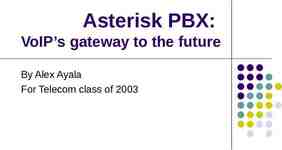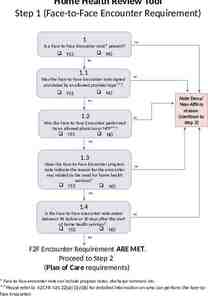IPv6 Routing
38 Slides848.50 KB
IPv6 Routing
Describing IPv6 Routing IPv6 Routing 2
IPv6 Routing Table IPv6 routing protocols still use the longest-match prefix as the oruting algorithm for route selection as their equivalent did in IPv4. Ipv6 routing table is handled and managed separately from the IPv4 routing table when both protocols are enabled simultaneously. IPv6 unicast-routing Enabled on Cisco routers router start forwarding IPv6 packets between its interfaces using IPv6 routing table. IPv6 Routing 3
Administrative Distance Administrative distance remains same as in IPv4 as displayed by the following table: IPv6 Routing 4
Displaying IPv6 Routing Table Following addresses are automatically inserted in the routing table: Link-local prefix Multicast-prefix Default ipv6 route IPv6 Routing 5
Static Routing
Static Routing Overview Static routes are manually configured and define an explicit path between two networking devices. Restrictions for Implementing Static Routes for IPv6: IPv6 static routes do not currently support the tag and permanent keywords of the IPv4 ip route command. IPv6 does not currently support inserting static routes into virtual routing and forwarding (VRF) tables. IPv6 Routing 7
Static IPv6 Routes Prerequisite for static IPv6 routes: Before configuring the router with a static IPv6 route: Enable forwarding of IPv6 packets using the ipv6 unicastrouting global configuration command enable IPv6 on at least one interface configure an IPv6 address on that interface. Static routes are useful for smaller networks with only one path to an outside network and to provide security for a larger network for certain types of traffic or links to other networks that need more control. Types of static routes 1. Directly attached static routes 2. Fully specified static routes 3. Floating static routes IPv6 Routing 8
Directly Attached Static Routes In directly attached static routes, only the output interface is specified. The destination is assumed to be directly attached to this interface, so the packet destination is used as the next hop address. ipv6 route 2001:0DB8::/32 ethernet1/0 all destinations with address prefix 2001:0DB8::/32 are directly reachable via interface Ethernet1/0. Directly attached static routes are candidates for insertion in the IPv6 routing table only if they refer to a valid IPv6 interface; that is, an interface that is both up and has IPv6 enabled on it. IPv6 Routing 9
Fully Specified Static Routes Both the output interface and the next hop are specified. This form of static route is used when the output interface is a multi-access one and it is necessary to explicitly identify the next hop. The next hop must be directly attached to the specified output interface. ipv6 route 2001:DB8:/32 ethernet1/0 2001:0DB8:3000:1 A fully specified route is valid (that is, a candidate for insertion into the IPv6 routing table) when the specified IPv6 interface is IPv6-enabled and up. IPv6 Routing 10
Floating Static Routes Floating static routes are static routes that are used to back up dynamic routes learned through configured routing protocols. A floating static route is configured with a higher administrative distance than the dynamic routing protocol it is backing up. As a result, the dynamic route learned through the routing protocol is always used in preference to the floating static route. If the dynamic route learned through the routing protocol is lost, the floating static route will be used in its place. ipv6 route 2001:DB8:/32 ethernet1/0 2001:0DB8:3000:1 210 Any of the three types of IPv6 static routes can be used as a floating static route. Note: By default, static routes have smaller administrative distances than dynamic routes, so static routes will be used in preference to dynamic routes. IPv6 Routing 11
Implementing Static Routes for IPv6 1. Configuring a Static IPv6 Route IPv6 Routing 12
Examples Directly Attached Static Route through Point-to-Point Interface Directly Attached Static Route on Broadcast Interface Router(config)# ipv6 route 2001:0DB8::/32 serial 0 Router(config)# ipv6 route 2001:0DB8::1/32 ethernet1/0 Fully Specified Static Route on Broadcast Interface Router(config)# ipv6 route 2001:0DB8::1/32 ethernet1/0 fe80::1 IPv6 Routing 13
Configuring a Floating Static IPv6 Route STEPS 1. 2. 3. enable configure terminal ipv6 route ipv6-prefix/prefix-length {ipv6address interface-type interface-number [ipv6address]} [administrative-distance] [administrative-multicast-distance unicast multicast] [tag tag] IPv6 Routing 14
Verifying Static IPv6 Route Configuration and Operation show ipv6 static To display a set of static routes and the installed status of each, that is, whether an entry for each route appears in the IPv6 routing table. show ipv6 route To confirm that installed routes are in the IPv6 routing table and that each route definition reflects the expected cost and metric. If a static route that you have configured does not appear in the IPv6 routing table, it is possible that there is a lower administrative distance from another source in the table, such as from a routing protocol. If a lower administrative distance exists, the static route is "floating" and will be inserted into the routing table only when the route learned through the routing protocol disappears. I IPv6 Routing 15
show ipv6 static Router# show ipv6 static IPv6 Static routes Code: * - installed in RIB * 2001:0DB8:3000:0/16, interface Ethernet1/0, distance 1 * 2001:0DB8:4000:0/16, via nexthop 2001:0DB8:1:1, distance 1 2001:0DB8:5000:0/16, interface Ethernet3/0, distance 1 * 2001:0DB8:5555:0/16, via nexthop 2001:0DB8:4000:1, distance 1 2001:0DB8:5555:0/16, via nexthop 2001:0DB8:9999:1, distance 1 * 2001:0DB8:5555:0/16, interface Ethernet2/0, distance 1 * 2001:0DB8:6000:0/16, via nexthop 2001:0DB8:2007:1, interface Ethernet1/0, distance 1 IPv6 Routing 16
Implementing OSPF for IPv6 OSPFv3
Similarities Between OSPFv2 and OSPFv3 IPv6 Routing 18
Prerequisites for Implementing OSPF for IPv6 Before you enable OSPF for IPv6 on an interface, you must do the following: Complete the OSPF network strategy and planning for your IPv6 network. For example, you must decide whether multiple areas are required. Enable IPv6 unicast routing. Enable IPv6 on the interface. Configure the IP Security (IPSec) secure socket application program interface (API) on OSPF for IPv6 in order to enable authentication and encryption. IPv6 Routing 19
Differences Between OSPFv2 and OSPFv3 In OSPF for IPv6, a routing process does not need to be explicitly created. In OSPF for IPv6, each interface must be enabled using commands in interface configuration mode. Enabling OSPF for IPv6 on an interface will cause a routing process, and its associated configuration, to be created. This feature is different from OSPF version 2, in which interfaces are indirectly enabled using the router configuration mode. Some of the notable changes include: platform-independent implementation protocol processing per-link rather than per-node explicit support for multiple instances per link changes in authentication and packet format IPv6 Routing 20
Differences Between OSPFv2 and OSPFv3 OSPFv3 runs over a link IPv6 uses the term link to indicate a communication facility or medium over which nodes can communicate at the link layer OSPF interfaces connect to links instead of to IP subnets. OSPF for IPv6 therefore runs per-link instead of the IPv4 behavior of per-IP-subnet, and the terms network and subnet are generally replaced by the term link. This change affects the receiving of OSPF protocol packets, and the contents of hello packets and network LSAs. IPv6 Routing 21
Differences Between OSPFv2 and OSPFv3 Link-local addresses are used OSPFv3 uses IPv6 link-local addresses to identify the OSPFv3 adjacency neighbors. When configuring the ipv6 ospf neighbor command, the IPv6 address used must be the link-local address of the neighbor. IPv6 Routing 22
Differences Between OSPFv2 and OSPFv3 Multiple OSPFv3 instance support Separate autonomous systems, each running OSPF, use a common link. A single link could belong to multiple areas. OSPFv3 uses a new field, called the Instance ID, to allow multiple instances per link. To have two instances talk to each other, they must share the same instance ID. By default, the instance ID is set to 0. Multicast addresses FF02::5 —Represents all shortest path first (SPF) routers on the link-local scope, equivalent to 224.0.0.5 in OSPFv2. FF02::6 —Represents all designated routers (DRs) on the link-local scope, equivalent to 224.0.0.6 in OSPFv2. IPv6 Routing 23
New LSA Types for IPv6 Link LSAs (Type 8) Have local-link flooding scope and are never flooded beyond the link with which they are associated. Link LSAs provide the link-local address of the router to all other routers attached to the link, inform other routers attached to the link of a list of IPv6 prefixes to associate with the link, and allow the router to assert a collection of Options bits to associate with the network LSA that will be originated for the link. IPv6 Routing 24
New LSA Types for IPv6 Intra-Area-Prefix LSAs (Type 9) A router can originate multiple intra-area-prefix LSAs for each router or transit network, each with a unique link-state ID. The link-state ID for each intra-area-prefix LSA describes its association to either the router LSA or the network LSA and contains prefixes for stub and transit networks. IPv6 Routing 25
Implementing and Verifying OSPFv3
IPv6 Configuration Before configuring OSPFv3, IPv6 must be enabled with the ipv6 unicast-routing global configuration command. Use the ipv6 address address/prefix-length [eui-64] interface configuration command to configure an IPv6 address for an interface and enable IPv6 processing on the interface. The eui-64 parameter forces the router to complete the addresses' low-order 64-bits using an EUI-64 format interface ID. IPv6 Routing 27
Steps to Configure OSPF for IPv6 1. 2. 3. 4. 5. Complete the OSPF network strategy and planning for your IPv6 network. For example, you must decide whether multiple areas are required. Enable IPv6 unicast routing using the ipv6 unicast-routing command. Enable IPv6 on the interface using the ipv6 ospf area command. (Optional) Configure OPSFv3 interface specific settings, including area, router priority, and OSPFv3 path cost. (Optional) Configure routing specifics from router configuration mode, including router priority, route summarization, and so on. IPv6 Routing 28
Enabling OSPFv3 on an Interface Most of the OSPFv3 configuration is done on the interface. IPv6 Routing 29
Configuring OSPFv3 Routing Specifics OSPFv3 routing specifics are configured from router configuration mode. For an IPv6-only router, a router ID parameter must be defined in the OSPFv3 configuration as an IPv4 address using the router-id router-id router configuration command. OSPFv3 uses a 32-bit number for a router ID. The OSPFv3 router ID can be expressed in dotted decimal, allowing easy overlay of an OSPFv3 network on an existing OSPFv2 network. If IPv4 is configured on the router, by default, the router ID is chosen in the same way as it is with OSPFv2. The highest IPv4 address configured on a loopback interface becomes the router ID. If no loopback interfaces are configured, the highest address on any other interface becomes the router ID. IPv6 Routing 30
OSPFv3 Route Summarization Before Summarization: After Summarization: IPv6 Routing 31
OSPFv3 Configuration Example IPv6 Routing 32
OSPFv3 Configuration Example The following example configures an OSPF routing process 109 to run on the interface and puts it in area 1: ipv6 ospf 109 area 1 IPv6 Routing 33
Verifying OSPFv3 IPv6 Routing 34
Verifying OSPFv3 Neighbors IPv6 Routing 35
Verifying OSPFv3 Database IPv6 Routing 36
Lab Exercises Configuring OSPF for IPv6 Case-study Configuring Static Routes and Routing Protocols with Cisco IPv6 Routing 37











































